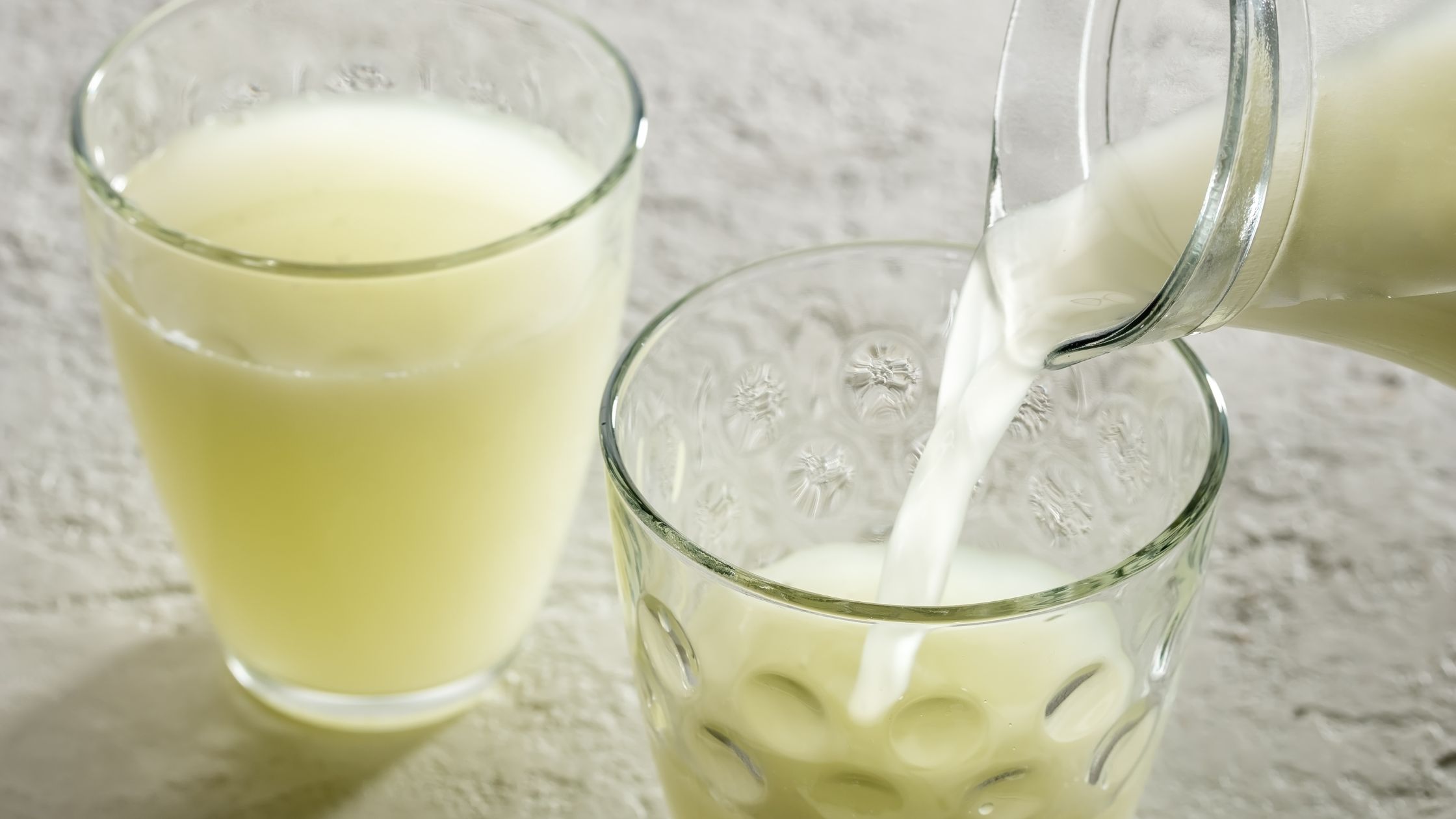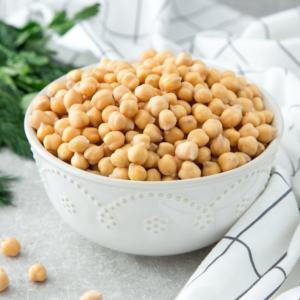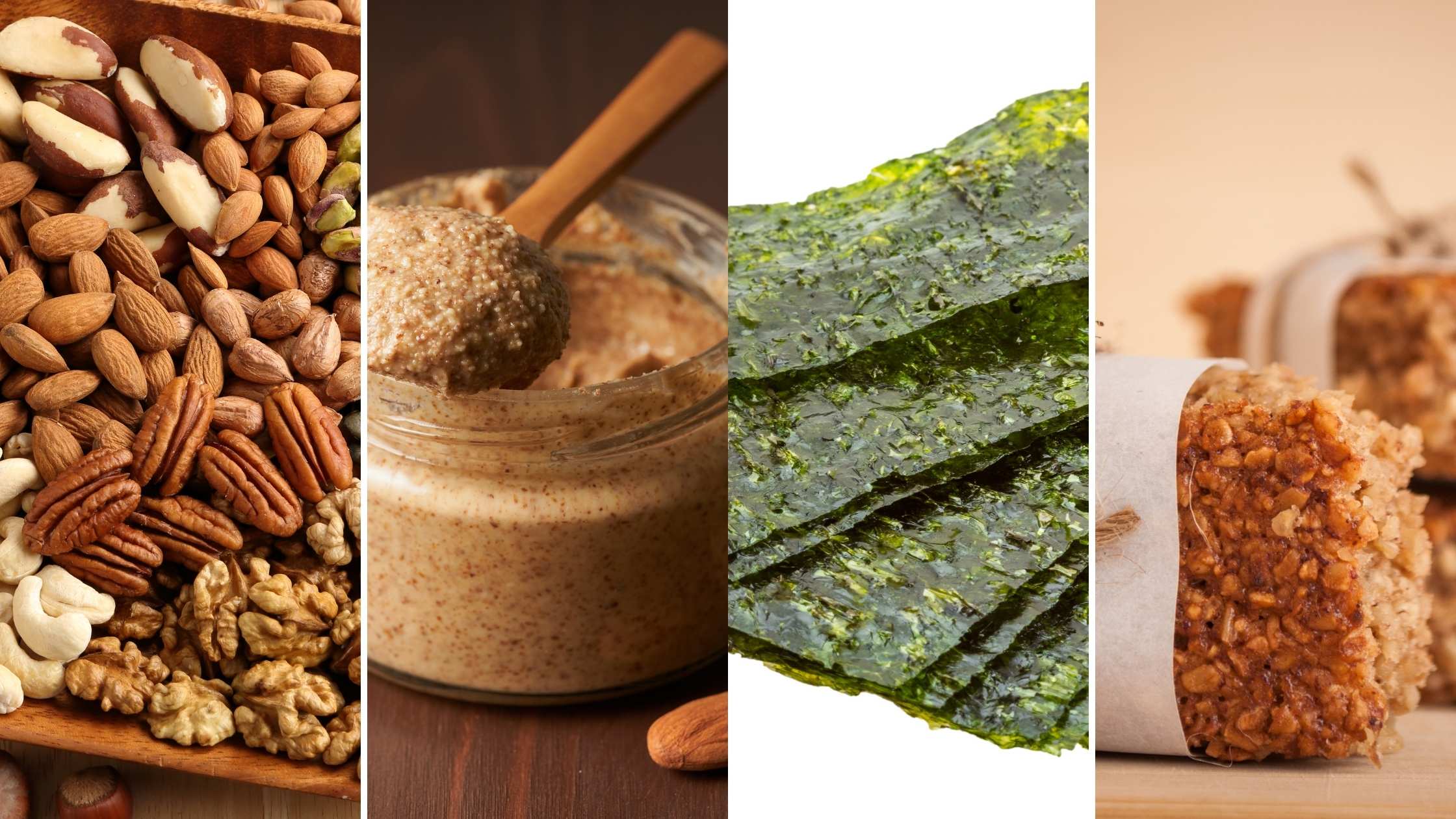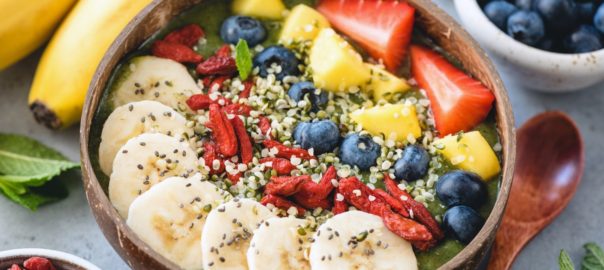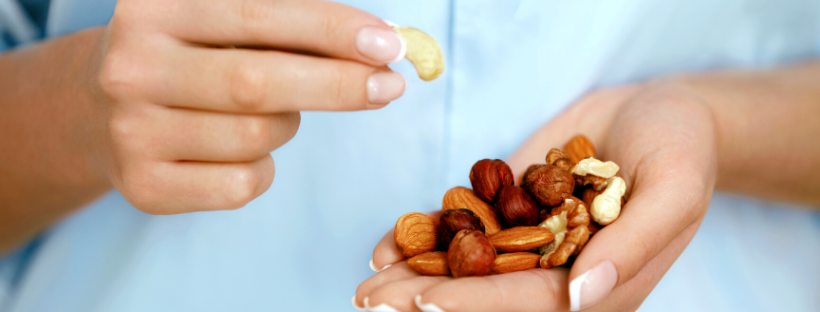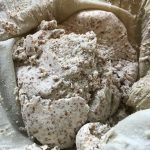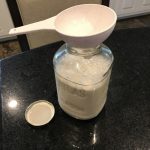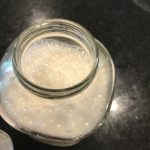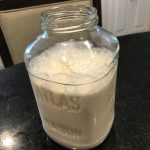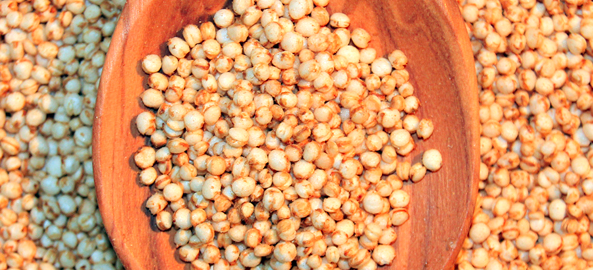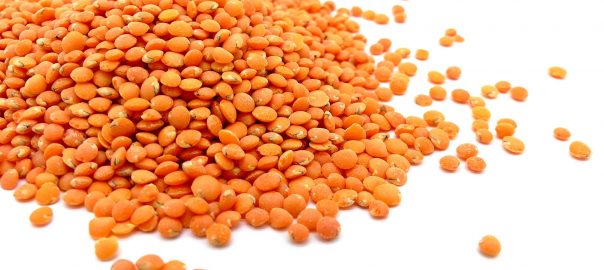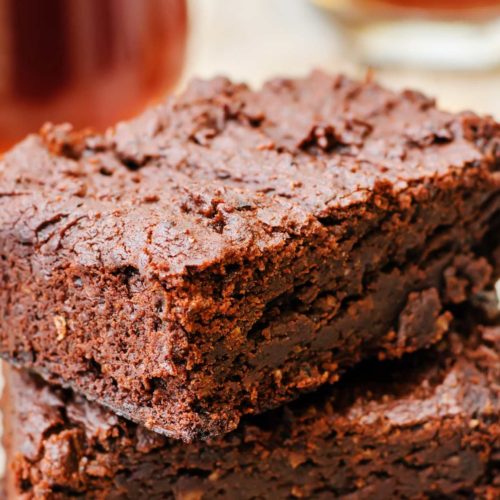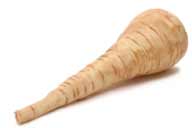If you’ve ever poured out the liquid that seems to always appear after you’ve spooned yogurt out of the container I’m here to tell you don’t do that.
If you’ve ever made your own homemade Greek style yogurt and not known what to do with all that strained liquid, I’ve got your 4-1-1.
Today we’re talking about liquid whey!
Understanding Liquid Whey
The liquid leftover from making cheeses and yougurt is whey and it’s got a lot of protein, so you don’t want to simply throw it out or feed it to the dog.
Chances are you’re familiar with whey protein powders, but I’m here to advocate for the liquid form which has some great health benefits.
Advantages of Incorporating Liquid Whey Into Your Diet
- High-Quality Protein - The protein in whey actually contains all of the essential animo acids your body needs for repairing muscle after workouts. This makes it a great choice for anyone who is an athlete or fitness fan who wants to improve their recovery time and possibly boost performance.
- Weight Management - The use of liquid whey protein can support the body in a positive way when it comes to helping promote feeling full. This in turn may help reduce caloric intake. In addition to that, studies have shown that whey protein can support maintenance of lean muscle and body composition.
- Antioxidant Rich - Because liquid whey provides a number of antoixodants, including glutathione, it helps to reduce oxidative stress and free radical damage. Studies further indicate that the whey protein is supportive for the antioxidant levels in the liver, lungs, muscles, and small intestine.
- Immune Boosting - The immunoglobulins and lactoferrin found in whey can help boost the immune system to support against disease and infection. According to studies whey has potential as a nutraceutical or functional food due to it’s anti-diabetic, anti-hypertensive, cardioprotective, and immunomodulatory abilities.
- Gut Health Support - Because liquid whey is so rich in is rich BCAAs (branched-chain amino acids) and peptides it can be beneficial to support the microbiome, enhance gut bacterial growth and development, and may also help reduce intestinal permeability and digestive issues.
All of which makes it a good choice to add to your diet.
Adding Liquid Whey To Your Diet
While it’s good to know why liquid whey is good for you, it’s probably more helpful to know what to do with it. My research indicates that manufacturers of sports beverages are looking at creating a new line of products that combines liquid whey with fruit juice, I’m not a fan of that method for adding liquid whey to the diet. First, I suspect that whatever they create is going to have a lot of sugar. Second, I have no idea what else they will put in the beverage.
In my opinion it’s better to make your own liquid whey and use it as is. If you’re making your own and you have more than you know what to do with, you can store it in the fridge for about 2 weeks or put it in the freezer for longer term storage.
Ideas For Using Liquid Whey
- Beans - using half water and half liquid whey is a great choice when cooking beans. It can help break down the toot-y causing properties of the beans.
- Smoothies - Because liquid whey is high in protein this is a good boost to your smoothie. Add in your favorite veggies and a little fruit and you’ve got a great protein-packed beverage.
- After Workout Beverage - Due to the health benefits listed above, liquid whey can be a great choice to help your muscles recover and may also help reduce soreness after a workout. Mix it with some water or a little plant milk.
- Soups - Add a healthy glug of liquid whey to your soups to add some extra protein. It’s especially delicious in tomato based soups imho.
- Sauces - Adding liquid whey also works well for sauces, simply add a couple of tablespoons to the pan while cooking.
- Salad Dressing - for a protein punch for your salad dressing combine liquid whey with olive or avocado oil, lemon juice, fresh minced garlic, and whatever herbs you’d like. It will be tangy and nutritious.
- Baking or Cooking - you can use liquid whey as a replacement for some of the liquid. It’s also a great substitute for water or milk when making pancakes, waffles, or oatmeal.
- Fermented foods - Liquid whey is a great option when it comes to making fermented foods such as sauerkraut or pickles. It enhances the flavor and boosts the beneficial probiotics. It’s also a wonderful way to make fermented condiments.
- DIY Protein Ice Cream - For a delicious protein rich ice cream you can blend together frozen fruit, liquid whey, and a little sweetener. It’s a great way to use it and makes a tasty treat.
Wonderful Whey Ice Cream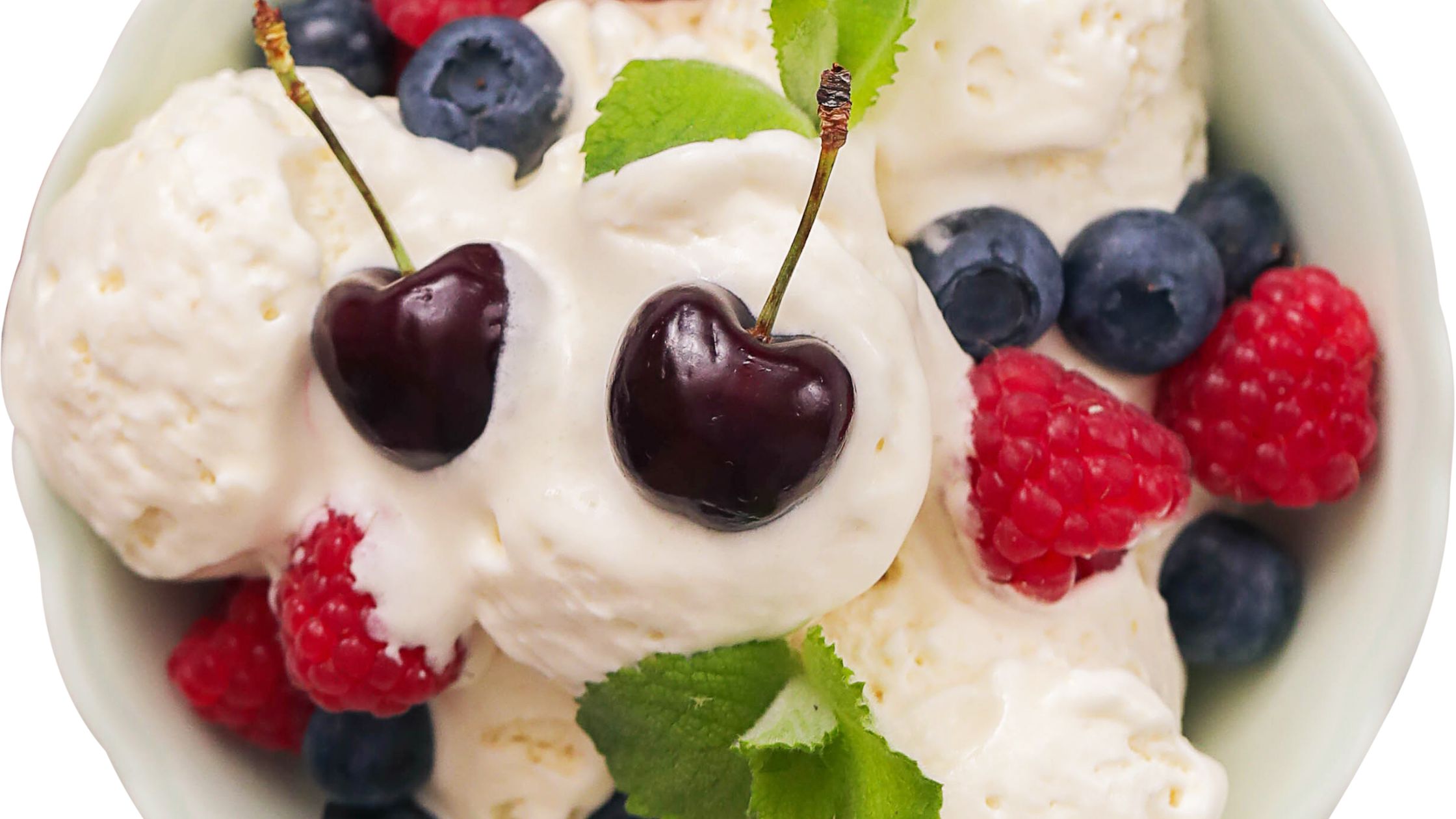
Of course I can’t tell you about using whey to make an ice cream and not give you a recipe. I especially like this recipe because it does not require the use of an ice cream maker.
Although the recipe calls for frozen mixed berries you can use any frozen fruit you like. Mango is particularly fabulous and cherries are wonderful.
I think the hardest part of this recipe is having enough whey on hand to make it. I encourage you to make your own Greek style yogurt so you’ll have both the thickened yogurt and the whey for this recipe. I’ve given you the how-to as part of the recipe.
- 2 cups plain Greek yogurt
- 1 cup liquid whey
- 1/4 cup honey or maple syrup
- 1 teaspoon pure vanilla extract
- 1/4 teaspoon salt
- 1/2 cup frozen mixed berries (blueberries, strawberries, raspberries)
Note: if the berries, especially the strawberries, are too big, chop them first before adding
Making the Greek Style Yogurt and Whey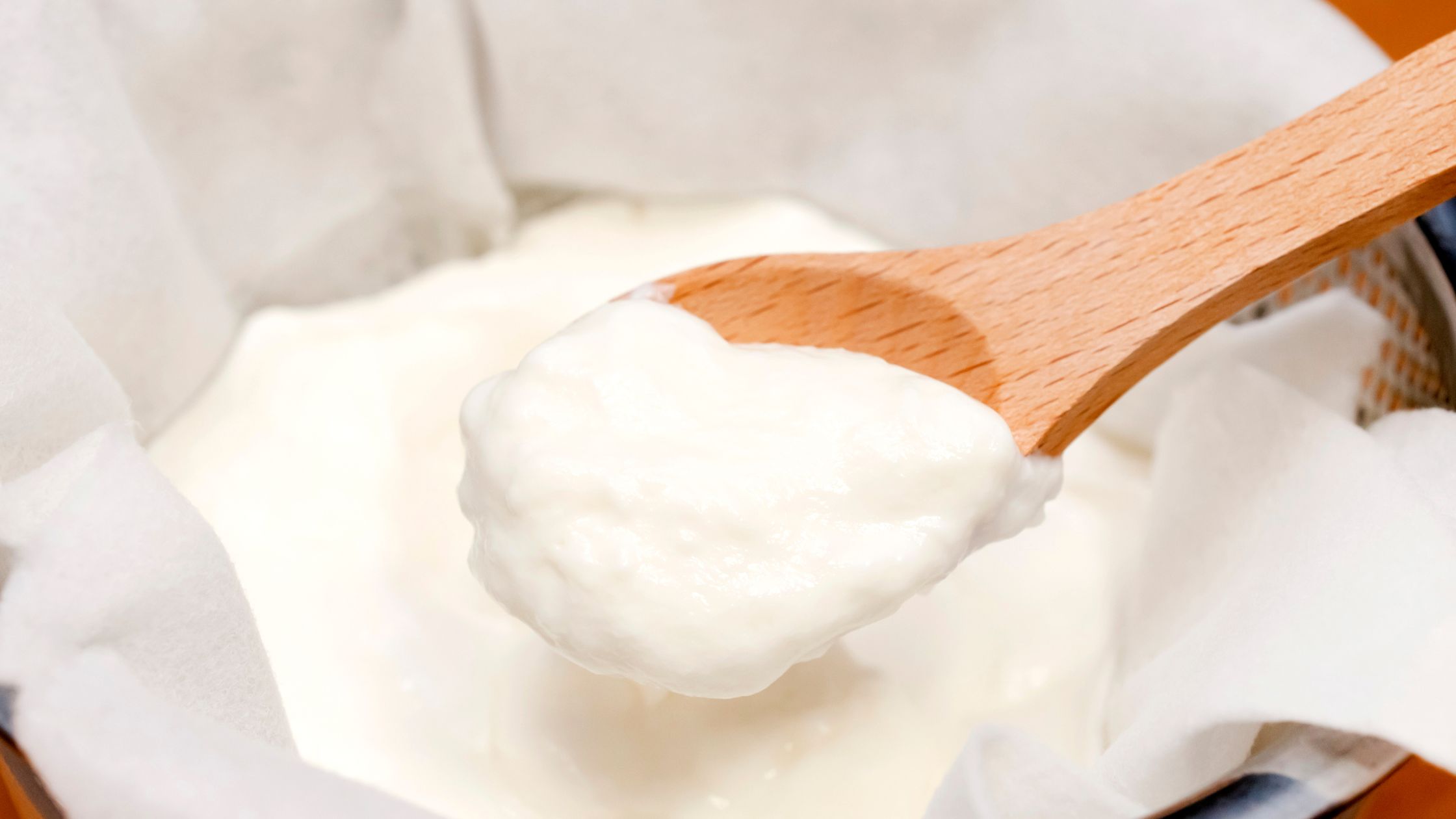
- Start with 4 cups of organic, full-fat yogurt
- Pour into a cheesecloth lined strainer or colander and place over a bowl
- Allow the yogurt to drain for at least 6-8 hours
- You should wind up with slightly more than 2 cups of Greek style yogurt and about 2 cups of liquid whey - see notes above for what to do with extra whey
Making the Ice Cream
- Add Greek style yogurt, liquid whey, sweetener, vanilla extract, and salt to a mixing bowl and combine until smooth
- Fold in the frozen fruit
- Scrape the mixture into a shallow, freezer-safe glass container and cover with a lid (this will help prevent the formation of ice crystals)
- Let the mixture freezer for about an hour, scrape/fold together, smooth and then let it continue to freeze
- Freeze at least another 2 hours before serving
- Let sit for 8-10 minutes to soften slightly before scooping to serve
Conclusion
Hopefully it’s clear that, as with any dietary changes, you need to know if this is something you can eat. Especially if you have any specific food sensitivities or dietary restrictions.
If you’ve determined that adding liquid whey to your diet is a good option for you, it’s a protein boosting, nutrient dense choice with a number of health benefits. When you add this delicious ingredient into your diet with soups, smoothies, salads, and more, you’re adding a wonderful real-food ingredient and making use of something that might otherwise be discarded.
I encourage you to add liquid whey to your diet and enjoy its deliciousness and health benefits.
[expand title="Sources"]
Anirudh, J., V. Dhineshkumar, and T. Sangeetha. "Whey as crucial component in rejuvenating athlete health-a review." Journal of Postharvest Technology 10.4 (2022): 135-155.
Devries, Michaela C., and Stuart M. Phillips. "Supplemental protein in support of muscle mass and health: advantage whey." Journal of food science 80.S1 (2015): A8-A15.
Vekoukis, Aristidis S., et al. "Whey protein boosts the antioxidant profile of rats by enhancing the activities of crucial antioxidant enzymes in a tissue-specific manner." Food and Chemical Toxicology 142 (2020): 111508.
Awuchi, Chinaza Godswill. "Whey protein from Milk as a source of nutraceuticals." Food and agricultural byproducts as important source of valuable nutraceuticals. Cham: Springer International Publishing, 2022. 159-183.
Boscaini, Serena, et al. "The ‘Whey’to good health: Whey protein and its beneficial effect on metabolism, gut microbiota and mental health." Trends in Food Science & Technology (2023).
[/expand]

